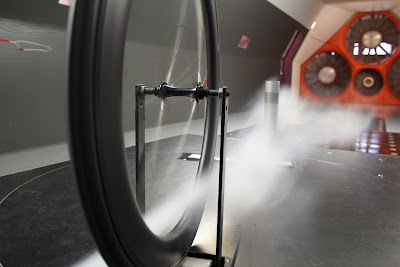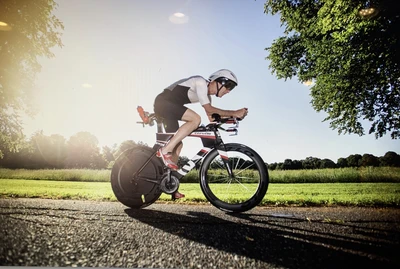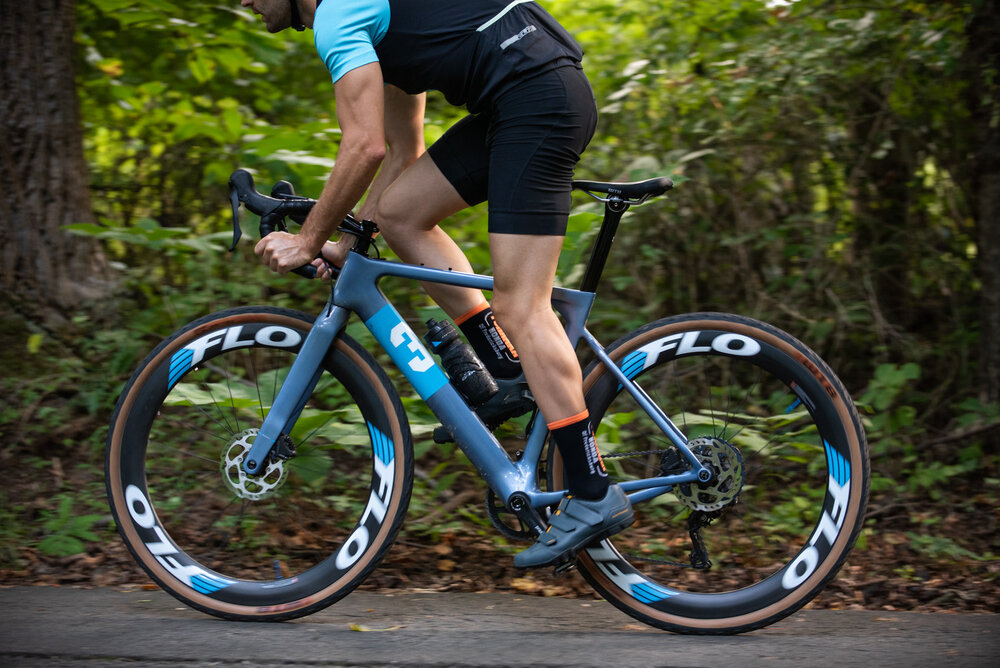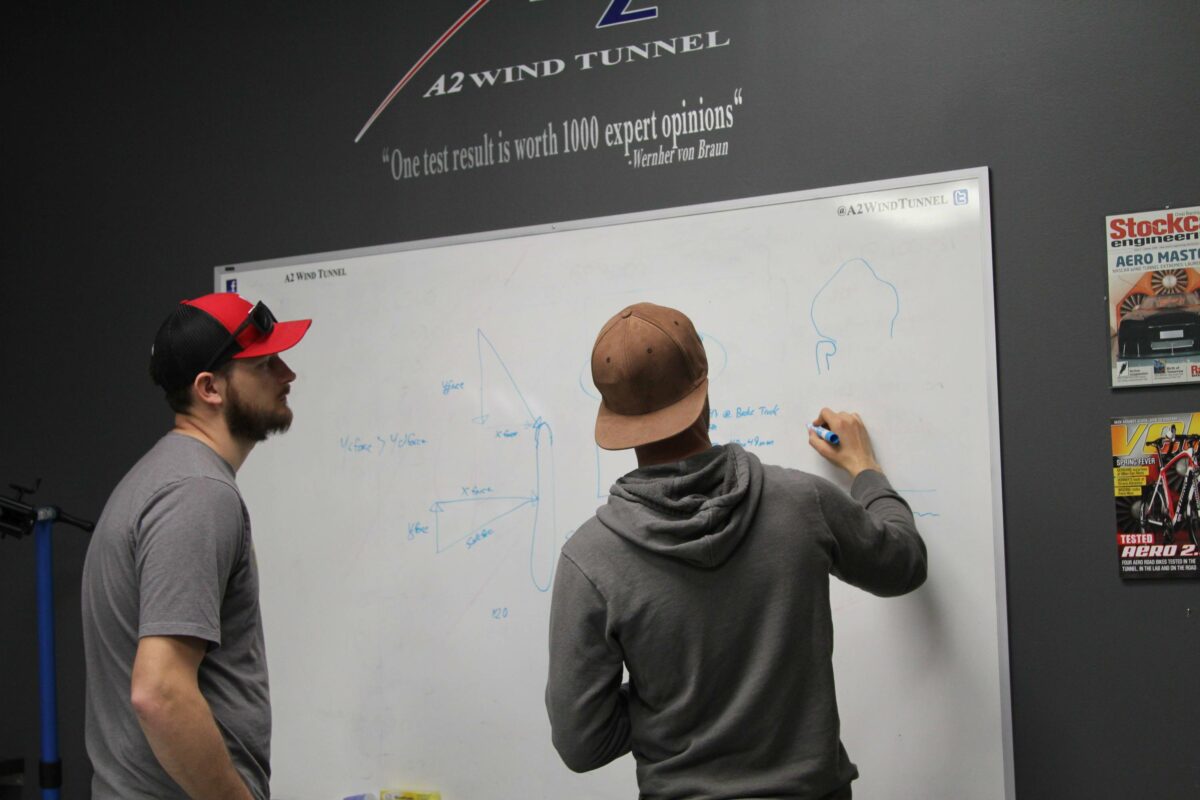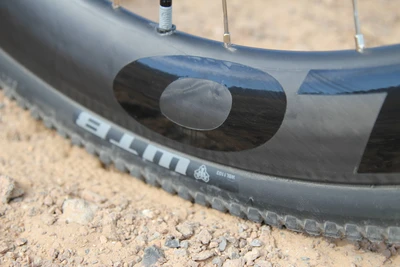Whether racing sprint, Olympic distance, half Ironman, or full Ironman triathlons, we all want to be as fast as possible on the bike leg. Efficiency on the bike leg is crucial for a successful run and a better time. Efficiency requires going as fast as possible for the least number of watts. This article will help you select the best wheels for your tri bike upgrade.
What Makes Picking Carbon Wheels for Your Triathlon Bike Different than Road Bike Wheels?

Road cyclists are often obsessed with being lightweight. A road race cycling course will often have more vertical feet of climbing than a tri course. In addition, the ability to draft off other riders in road races allows these weight considerations to become more central as aero advantages are gained from drafting. While aerodynamics still matter more than weight for roadies, for triathletes who cannot draft and race on courses that rarely ascend Alpe d’Huez types of climbs, aero is KING.
A second consideration for road cyclists is the high variability of pace in a racing scenario. Unlike tri’s where athletes seek to lay down consistent power, road races have surges in speeds, breakaways, and sprint efforts. Roadies have a goal of staying connected to the rider in front of them at almost any cost. This is where a lightweight wheel’s superior acceleration is needed in a way that is not relevant to triathlon. If you are accelerating and decelerating throughout the bike leg in a tri or duathlon, you will be in big trouble come final run time. Road bikes have different criteria for success than a fast tri machine!
In addition, for triathletes bike handling is a consideration. Staying down in the aero bars is crucial. The frame geometry and rider position on a triathlon bike result in them being less responsive than an aggressive road setup. If you fear with how the bike is handling, you’ll often come out of an aero position. This will slow you down much more than any time you will gain from a fast wheelset. But as you improve your handling skills, gain confidence, and can thus stay lower in different wind conditions, a set of carbon triathlon wheels will absolutely make you faster. In fact, FLO’s testing shows a savings of over 6.5 minutes in an Ironman length event versus standard Mavic open wheels. Without an optimized wheelset, you’ll have to run 20 seconds per mile faster for EVERY mile on the marathon leg to make up that time. That’s huge come race day!
Summary: Improved aerodynamics beats being lighter every time in triathlon time trials.
Front Selection: Deep Wheels or Not?
It used to be said, “Go as deep as you can handle in the conditions.” FLO previously recommend our 90 mm deep front wheel to heavier, experienced athletes. However, advanced engineering has now allowed us to create a 77mm deep section rim that is faster than our previous 90mm wheel. As FLO has led the way in understanding aerodynamics, rolling resistance, road vibration, real-world wind yaw, and other key factors, we’ve applied these gleanings to our carbon wheel design.
The introduction of the FLO 77 AS means you get more speed with less fear of being blown about because of a faster design with a shallower depth.
Why not a disc front on my tri bike?
Maybe you’ve watched an Olympic track event on a velodrome and thought, “I should try a disc on my front like they do. After all, isn’t the front wheel the one causing the most drag?”
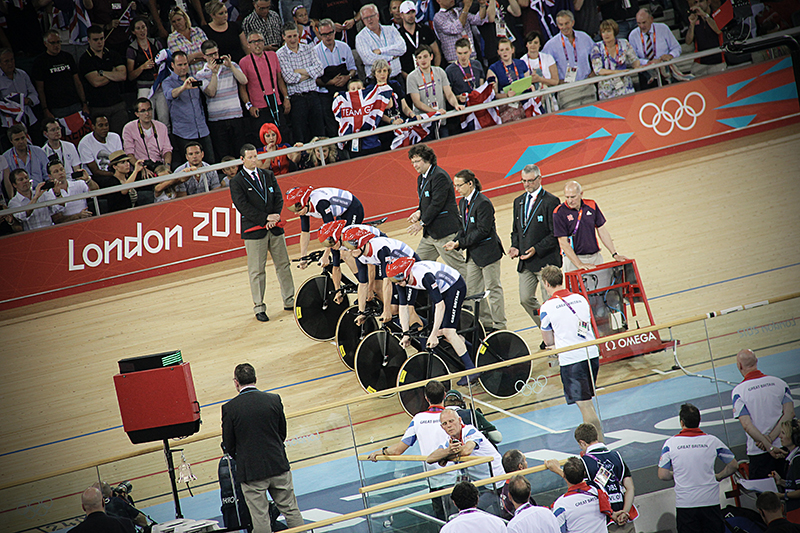
While a front disc would technically be the fastest in a lab setting, we would never recommend a front disc in a real-world, outdoor setting. Why? With any crosswinds, a triathlon bike would be unrideable. Since the front wheel is mounted to a rotating fork to allow the rider to turn, a steering axis is created. This steering axis causes the front wheel to be much more reactive to wind gusts than a rear wheel.
Summary: Don’t go deeper than you can handle in crosswinds.
Rear Selection
A rear wheel will not react in the same way as a front-wheel because it is fixed in the frame without a steering axis. A rear wheel will only move as much as the rest of the bike does when subject to side forces. You can get away with much greater depth wheels for the rear than you can the front.
Rear Disc for Tri’s
This back-wheel-is-affected-much-less principle is why you’ll see many elite and age group triathletes riding a rear disc wheel. In almost every situation, a rear disc is the fastest means to get from point A to point B. The only situation where this isn’t true is if there are insane crosswinds (35 mph). Because of unpredictable crosswinds, a few races don’t allow discs for this reason. The famed Kona race is one of these. However, most triathlons DO allow disc rear wheels to be used.
We realize that some FLO riders will use the same rear-wheel for road racing/riding events. If you seek a wheel that is fast but can be used in both TRI and ROAD racing/rallies, consider the FLO 77 AS rear or FLO 90 A+C as your best contenders.
Summary: If you are going to go disc or extremely deep rimmed, do so in the back.
The Best Tri Wheel for You
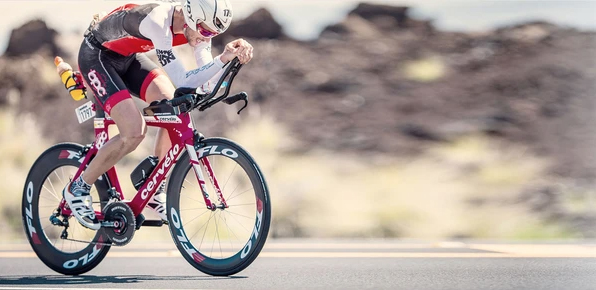
Several of our FLO riders have multiple types of wheels allowing them to select the best one for the specific conditions of the day. We understand that, for many, this is not an option. Because of a budget, want to spend your money on one wheelset upgrade and want to pick the best wheels for your needs. FLO Cycling’s wheels are tough enough to use for both daily training and races. This durability allows you to buy one wheelset that can serve as both training and racing wheels. There is no need to have an expensive set that comes out of storage only on race day. You should be able to enjoy your purchase of the every day you ride.
If you are buying your first set of triathlon bike wheels, we suggest using the chart below. This will assist you in selecting a combination that is fast and stable for your particular needs.
Instructions to the Guide.
- First, find your weight.
- Then, consider how experienced you are in handling a tri bike.
- Finally, consider the winds you most often face in your riding environment.
Front Tri Wheel Selection Chart
| Gender | Weight | Handling Ability | FLO 49 AS | FLO 64 AS | FLO 77 AS | FLO 60 A+C |
| Male | < 170lbs | Novice or Hates Crosswind | BEST | GOOD | NOT RECOMMENDED | GOOD |
| Male | < 170lbs | Experienced and Okay With Crosswind | FAIR | BEST | GOOD | BEST |
| Male | > 170lbs | Novice or Hates Crosswind | GOOD | BEST | NOT RECOMMENDED | BEST |
| Male | > 170lbs | Experienced and Okay With Crosswind | NOT RECOMMENDED | GOOD | BEST | BEST |
| Female | < 120lbs | Novice or Hates Crosswind | BEST | FAIR | NOT RECOMMENDED | FAIR |
| Female | < 120lbs | Experienced and Okay With Crosswind | BEST | GOOD | FAIR | GOOD |
| Female | > 120lbs | Novice or Hates Crosswind | BEST | GOOD | NOT RECOMMENDED | GOOD |
| Female | > 120lbs | Experienced and Okay With Crosswind | GOOD | BEST | GOOD | BEST |
Rear Tri Wheel Selection Chart
| Gender | Weight | Handling Ability | FLO 49 AS | FLO 64 AS | FLO 77 AS | FLO 60 A+C | FLO 90 A+C | FLO DISC (Any Model) |
| Male | < 170lbs | Novice or Hates Crosswind | FAIR | BEST | GOOD | BEST | GOOD | FAIR |
| Male | < 170lbs | Experienced and Okay With Crosswind | FAIR | GOOD | BEST | GOOD | BEST | GOOD |
| Male | > 170lbs | Novice or Hates Crosswind | FAIR | GOOD | BEST | GOOD | BEST | GOOD |
| Male | > 170lbs | Experienced and Okay Crosswind | NOT RECOMMENDED | GOOD | BEST | GOOD | BEST | GOOD |
| Female | < 120lbs | Novice or Hates Crosswind | BEST | GOOD | NOT RECOMMENDED | GOOD | NOT RECOMMENDED | NOT RECOMMENDED |
| Female | < 120lbs | Experienced and Okay With Crosswind | GOOD | BEST | GOOD | BEST | GOOD | GOOD |
| Female | > 120lbs | Novice or Hates Crosswind | GOOD | BEST | GOOD | BEST | FAIR | FAIR |
| Female | > 120lbs | Experienced and Okay With Crosswind | NOT RECOMMENDED | GOOD | BEST | GOOD | BEST | GOOD |
Shop for Your Best Wheels
Rim Brake Wheels versus Disc Brake Wheels for Triathlon Bikes
Yes, the nomenclature can get a bit confusing. Cycling should have thought of a different name for either disc wheels or disc brakes, as the two aren’t the same.
A disc wheel has a continuous rim with no spokes visible. A disc wheel can have either a disc brake or a rim brake.
A non-disc, carbon wheel with spokes can also have either a disc brake or a rim brake.
The industry trend is towards disc brakes because they offer better braking performance with increased stopping power due to the braking surface. However, disc brakes are often less aero-especially when compared to some of the tri superbikes that have the rim brakes hidden behind the front fork. They are also heavier. Also, keep in mind that many Pro triathletes are sponsored and have to ride whichever type of product their sponsoring brand wants to push to consumers. We realize different riders see things differently. For this reason, FLO offers both disc brake and rim brake models for each of our aero wheels. No matter whether you prefer rim brake bikes or a disc braking system you select, we’ve got you covered.
Tubeless Versus Tubes
Tubeless triathlon wheels are growing in popularity. Tubeless tires can be run at lower pressure, creating a more comfortable ride and decreasing rolling resistance for added speed. The addition of sealant also means there is much less chance of a race or training ride be slowed or ended by a flat tire. If a puncture occurs, the sealant seals the hole rapidly as you ride.
Traditional clincher tires have an inner tube made of butyl or latex that sits in between the tire and the rim. The tube is inflated so that it expands inside the tire. A tubeless wheel means that an inner tube is not needed inside of the tire. Instead, the tires and rim are designed to contain the air pressure inside the tire itself. Tubeless rim tape is applied to the inside of the rim to ensure no air leaks out. Then the tire is mounted and sealant is placed inside the tire. Finally, the tire is inflated so that the tire beads grab hold of the rim.
- Tubeless Ready: Any rim that can receive a tubeless tire and be inflated without a tube. The rim bed is sealed against air loss (via being solid material or through the addition of airtight rim tape), and that the clincher hook is tubeless ready.
All FLO wheels are tubeless ready. We ship each AS wheel with tubeless rim tape. Our choice of sealant is Stan’s.
Summary: Tubeless is growing in popularity rapidly and the days of tubed clinchers might be over soon.
Wind Tunnel Testing
Some wheel manufacturers will test their wheels in a wind tunnel. This is expensive and available testing time is limited. At FLO we first use computational fluid dynamics software to model our rim profiles. This allows the computer to a large number of iterations regarding the best shape for all yaw angles, resulting in a rim profile that is best for the broadest spectrum of typical riding conditions. We then take the CFD prototypes into the wind tunnel to see how they respond.
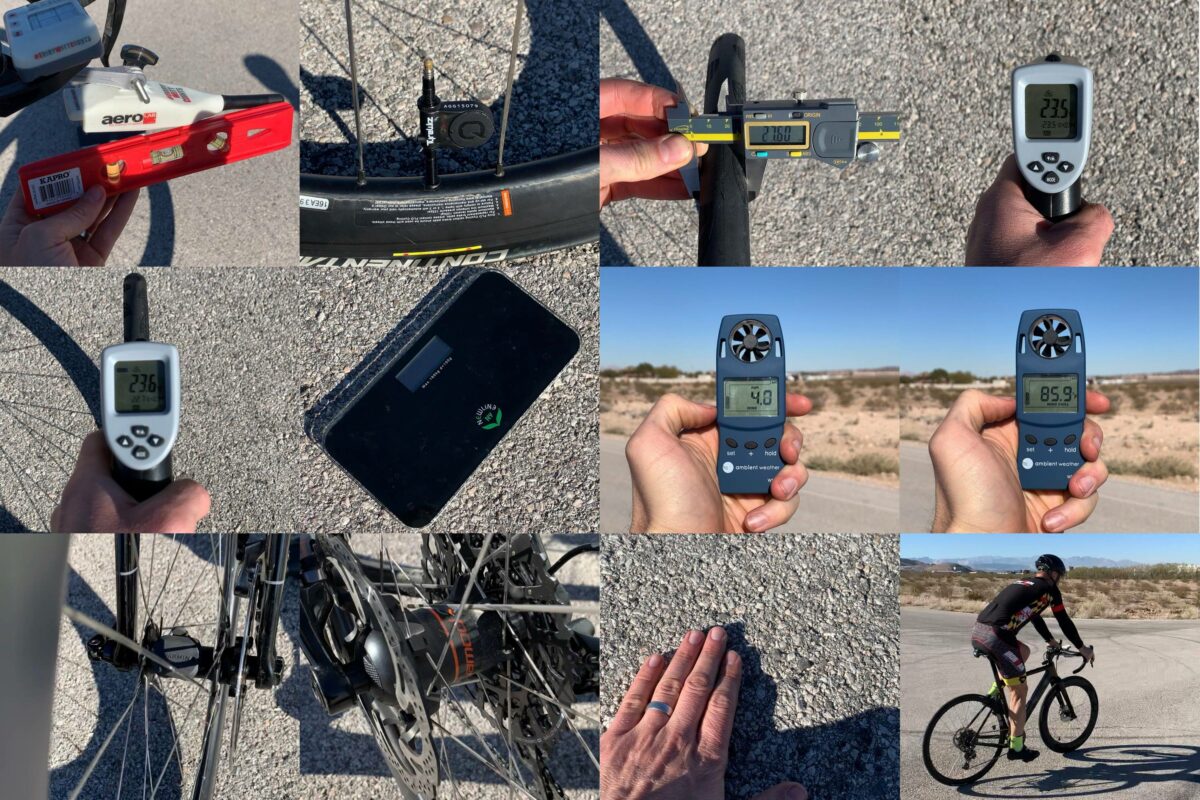
FLO has also done extensive hours of outdoor testing, collecting millions of data points of information about the real-life environment of outdoor riding. In our groundbreaking research, we found that the angle at which wind hits your wheels (called a yaw angle) is much narrower than many in the cycling industry previously thought. We accounted for this in our design to create a faster wheel.
Budget Considerations When Getting the Best Triathlon Wheels
Full carbon clinchers wheels from the All Sport cost more than our aluminum + carbon wheels which have an aluminum rim and carbon fiber fairing. The raw material used and the manual time required to make a carbon clincher is the reason a carbon clincher is more expensive than an Aluminum + Carbon wheel. If you look at the price tag on many brands, you might get sticker shock.
FLO’s direct-to-consumer model lets you save serious money on high-performance new wheels for your triathlon steed.
For example, review the cost savings versus other high-performance wheels of similar rim depth (70-80mm):
A Single Tri Wheel Upgrade Cost Comparison (Front Only)
| Brand + Model | Price for Front Wheel Only | Savings if Using FLO 77 AS Instead |
| FLO 77 AS | $724 USD | — |
| Zipp 808 | $1300 USD | Save $581 |
| Enve 7.8s | $1,275 USD | Save $556 |
| Hed RC8 Pro | $1,400 USD | Save $501 |
| DT Swiss ARC 80 | $1,046 USD | Save $321 |
| Swiss Side HADRON² Ultimate 800 | $1,006 USD | Save $287 |
If you buy a front and rear wheelset, that amount of savings doubles! You CAN get speed at less cost.
Why Consider FLO?
- Direct-to-consumer model means more speed for less money. Good for your budget and performance.
- Large selection of rim depth-shallow to deep to disc wheels.
- Reduced aerodynamic drag.
- Lower rolling resistance
- Increased rider comfort with a smooth ride resulting from a wider internal rim width.
- Sapim CX-Ray aerodynamic spokes are durable and carve through the wind.
- FLO Vortex hubs offer minimal friction bearings.
- Lower vibration.
- Crosswind stability in variable riding conditions.
- Stiffness for maximum power transfer.
- Lightweight carbon as compared to alloy wheels.
- Shipping worldwide to almost every country on the globe.
- Both full carbon and alloy carbon rim selections.
- Models specifically designed for the demands for real-world, time trial conditions.
Shipping Note: Because of the effects of COVID-19 on manufacturing plants, many wheel manufacturers and bike suppliers are seeing product delays well into 2022. Make sure you check when your selected manufacturer will be shipping. At FLO, we have clearly marked which products are in stock and when we expect replenishment on those that are currently backordered. Now that multisport events are starting to resume around the world, we want you to know when you’ll be equipped with your FLO products so you can determine the best course of action.
Beat Your Goals. Improve Your Performance.
A fast-rolling set of FLO carbon wheels can improve aerodynamics and your race results at an affordable price. With a variety of depths and even options on sticker colors, an exact match for your needs is possible. And our wheels are tri-tested with over 650 athletes riding FLOs in swim/bike/run events on the FLO Factory Team. Please reach out with any questions. We love to serve and aid in educating athletes. Get the fastest wheel possible for your triathlon bike and have fun!

